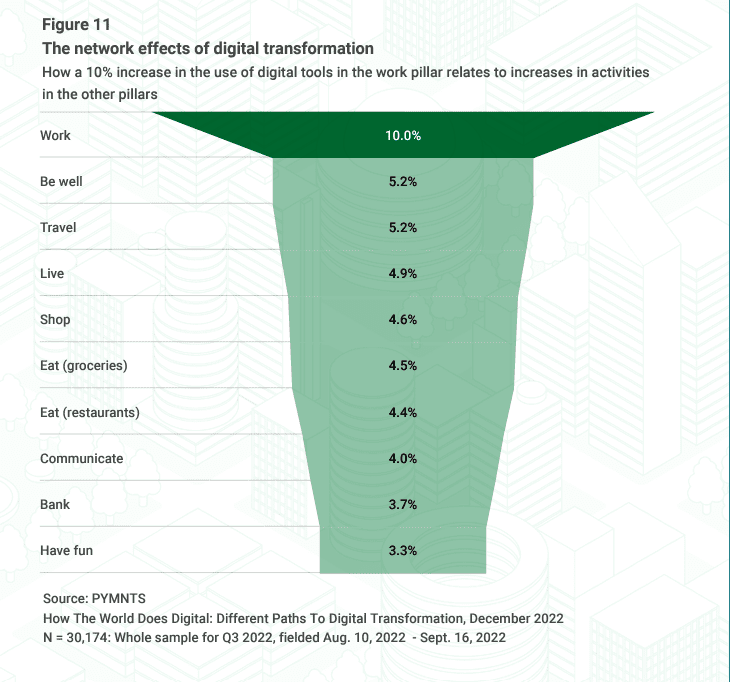Surge in Remote Workers Brings Opportunity for Online Retail, Grocery

The growing remote workforce presents a unique opportunity for online businesses as they boost online grocery and retail sales.
A record number of consumers globally are at least partially working outside the office as of Q3 2022. Of those who reported working in the 30 days before the survey, 44% said they had worked online remotely, up one percentage point from the previous quarter, according to How The World Does Digital: Different Paths To Digital Transformation.
Perhaps unsurprisingly, PYMNTS has found that this demographic utilizes digital platforms to shop for retail and grocery items more frequently than consumers working fully on-site. Among consumers working remotely, 63% reported using a digital platform to order groceries for delivery at least once during the same period.
Research shows that the increase in remote workers is also accelerating digital activity within the nine other pillars of PYMNTS’ ConnectedEconomy™ index – bank, be well, communicate, eat, have fun, live, move, pay and shop. To help illustrate this dynamic, we modeled how a 10% engagement in remote work would impact these other areas.

Retailers, grocers and other businesses involved in online transactional activities have an opportunity to cater to these digital-first employees. For example, the ConnectedEconomy™ Monthly Report shows that consumers working more than 50 hours per week during August 2022 were the most digitally engaged, averaging 66% participation across several connected activities versus a sample average of 45%. Financial institutions may take this opportunity to offer time-saving money management tips and other budget tools to increase customer loyalty.
Grocers and restaurants offering online ordering and delivery can also leverage the growing remote workforce to shape loyalty strategies. Per PYMNTS data, two of the demographics most likely to order food online were remote workers and men.
Today’s savvy businesses can benefit from tailoring their loyalty strategies to retain remote-working customers, a steadily growing demographic that values the convenience of digital channels.
